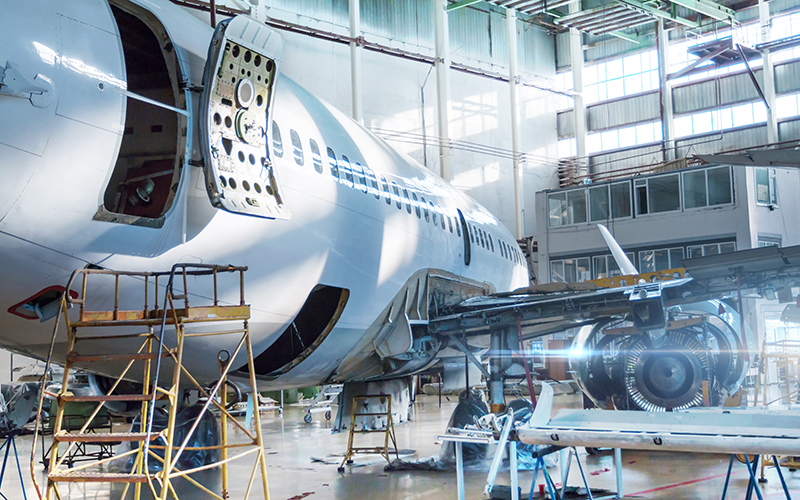Krystina Pearson-Rampeearee is a STEM ambassador and aerospace engineer from Liverpool. Student Circuit catches up with Krystina, delving into her journey throughout her career where she gives advice to those wanting to follow in her footsteps and highlights key challenges she’s overcome.
Could you talk me through your career so far?
Currently I’m a Chartered Engineer working at BAE Systems in the Air Sector as a Senior Flight Systems Engineer.
I always found my strengths were in the STEM subjects and after a visit to an air show with my family when I was young, I knew the world of aviation was the industry I wanted to be in!
I chose the university route because apprenticeships weren’t particularly highlighted as being an option for me. I went on to complete a master’s degree in Aerospace Systems Engineering and I’ve been at BAE Systems now for almost eight years. In that time I’ve had the opportunity to work on various programmes and am currently working on the Tempest programme; exploring potential technologies for the development of a next generation fast jet.
What was your experience with education?
At school I enjoyed maths and physics however I wasn’t ever the best in the class! I was also passionate about the arts and being creative too, so I think that this has put me in good stead for my current role at BAE Systems.
As a teenager I did feel a sense of pressure from my family to follow in my mum’s footsteps and become a pharmacist, even though this wasn’t a path I wanted to follow. I decided to apply for a degree in both Pharmacy and Aerospace Engineering, but when the offer came through for Aerospace Engineering, I knew my future lay there and I chose to follow my own path. I’ve never looked back and I’m so glad I went after my dream career.
I was one of only two women on my course, which in total was around 30 people. I was shocked and a little intimidated at first but it didn’t stop me or make me feel as if I didn’t belong. However, it did bring to my attention how much stereotypes play a role in our society. To many people I don’t ‘look like an engineer’.
It was during my time studying Aerospace Engineering that I first realised the extent of the gender disparity in STEM industries, and engineering more specifically. This is something I not only noticed in higher education, but throughout my career and still to this present day. Women make up around 24% of STEM employees in the UK, with sectors such as engineering having workforces where only around 11% are women.
What was a highlight for you during your time at university?
My highlight during university was presenting my final year group project with my team. It was my first time presenting to professionals in industry, which was a valuable learning experience, and we received great feedback. We put a lot of effort into the project and it really showed!
What specifically about aerospace engineering do you love?
I love constantly learning new things and working as part of a team towards a common goal. The most exciting part for me is being involved in the Tempest programme which is a once in a lifetime opportunity. I never imagined I would be able to work on an aircraft this early on in the lifecycle.
What advice would you give to young people wanting a career in aerospace engineering?
I would encourage everyone to follow their passion and dreams and to not get held back by stereotypes, stigmas or misconceptions – especially young females who want to get into an industry which is still male dominated, like aerospace engineering.
There’s so many different types of people that work as engineers, STEM truly is for everyone. It’s not a one size fits all kind of thing; stereotypes are there to be broken.
This is one of the main reasons why I wanted to become a STEM Ambassador – to encourage and inspire students to follow their dream career, no matter which industry it’s in. If you work hard and stay true to yourself, the benefits will follow.
What’s next for you in your career?
One of the things I love about engineering is that there are lots of possibilities for progression; however at the moment I plan to stay in the Aerospace industry and keep developing myself professionally with the aim of moving into a leadership role in the future.
What has been the highlight of your career so far?
I am proud to have achieved so much. Achieving my professional registration to become a Chartered Engineer and being in a career I am passionate about is an ongoing highlight for me
Additionally, although it’s not a part of my day-to-day career, I am the proud owner of an online small business. I’ve been determined to challenge misconceptions around those working in STEM subjects for some time, and as a fan of pin badges myself, I took the opportunity during the pandemic to design my own.
I designed a badge with the words ‘This Is What An Engineer Looks Like’ emblazoned on it. I was really proud of the mini but mighty display of strength it represented and wanted to see if there was demand out there for a product like that. I made 100 badges, put them online, and they sold out within 48 hours. I was over the moon and there has been a lot of interest in other similar products. I now sell 48 different types of badges, such as ‘This Is What A Pilot Looks Like’, and ‘STEM is for Everyone’.
Another highlight is also a full circle moment I had as a STEM Ambassador when I spoke at the very same ‘Engineering Your Future’ event that had inspired me as a young student to get into Engineering. It was a very poignant moment for me and it felt very surreal, but I was proud to take part.
What has been a key challenge during your career?
I would say a challenge has been facing and challenging societal stereotypes about what an engineer ‘should look like’, but I have relished having the opportunity to break down the walls. No matter your age, gender or race, there is space for everybody in STEM subjects.
Diversity only improves a company – the more different we are, the more we can learn from one another. There has definitely been improvement in the STEM world with a lot more women in engineering now than when I entered the industry. It is great to see women achieving their potential and realising what they can bring to the table.
Could you talk me through a typical day at work as an aerospace engineer?
I work with a team of engineers and every day is different!
I could be working with suppliers, liaising with other specialists in the company such as designers, aerodynamicists and more to prove out and de-risk different elements of new technology for the main Tempest programme.
Have you had any negative experiences due to being a woman in engineering? What more can be done to ensure this stops for other women?
I feel fortunate that I was listened to and supported on my course at university. We were all very supportive of one another and bonded well as a group – I even met my future husband there!
It was a little intimidating being one of only two women on my MEng in Aerospace Engineering when I first started and I am so proud to be a STEM Ambassador now. I’m passionate about improving diversity and a huge part of my Ambassador role is getting young people, particularly women, into STEM subjects. Slowly but surely there is a lot more acceptance of diversity in STEM – the world is changing and there isn’t room for prejudice anymore.





